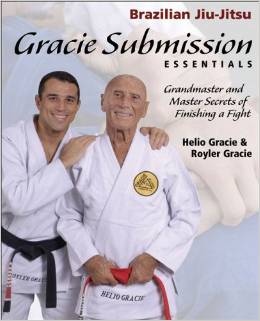How To Submit: Advice from the Masters
Everyone’s favourite subject in brazilian jiu-jitsu is how to catch more submissions on your opponents. The internet is filled with technique videos and new submissions with signature names being invented each week it seems. Many students are scouring the bjj blogs and YouTube channels looking for that new, unknown submission that will catch their training partners by surprise.
The 2 most straightforward ways to submit your opponent:
1) Catch the opponent with a submission that they don’t know and were not prepared to defend against
2) Tire out the opponent through pressure and movement until the opponent gives up a submission through fatigue
This all works fine up until a certain point.
What if your opponent is experienced and KNOWS all of the moves that you are attempting (and the counters!)?
What if your opponent is in BETTER physical condition than you, stronger and / or heavier and waiting for them to tire out is not an option?
Now we need to find a different strategy to get the submission. Interestingly, my own head instructor rarely submits me with anything but the most “basic” submissions. It is the “basic” straight arm lock from mount or a triangle from guard – not a gogoplata or spinning double reverse Ninja choke that gets me to tap.
As a blackbelt, if I know the counters to these common attacks, how is he still catching the tap? I am heavier and stronger (weight room type of strength) than my head instructor so there must be another factor.
The answer is HOW he is setting up and attacking the subs?
One of my favourite bjj books is a lesser known title, “Gracie Submission Essentials” by Royler and Grand Master Helio Gracie whose area of concentration (if you couldn’t tell by the title already) deals with how to submit your opponent.
In reading the lessons contained in the book, I recognized several principles that my own instructor was using to successfully attack with his submissions.
Here are 3 pieces of advice on submitting your opponents:
1) Isolate the limb and use superior leverage. Your arms might be much stronger than mine. But your arm is not stronger than my hips, 2 legs and 2 arms exerting force on your elbow joint!
Employ your whole body against their single joint. This requires you to isolate the arm away from the body and use the strongest muscles in your body against a comparatively weaker part of the opponents body.
When attacking the omoplata or triangle arm bar, my instructor with use his hips and legs to isolate my arm away from my body – where it is in a much weaker biomechanical position and then attack.
This isolation is achieved through control: position before submission.
2) In the book, Royler Gracie’s advice is : Squeeze your opponent with pressure to see how they react. Catch the opponent by anticipating and being one step ahead of their defensive movements.
Royler’s submission strategy is based on being able to control your opponent and then allow them a small window of space to learn which way they will attempt to move to escape.
Steer them to go where you want them to go, and then have a trap waiting for the opponent! When they try to escape through the opening you have provided, snap the trap shut!
You are now one step ahead of your opponent and have more time to secure your best submission when the opponent is caught by surprise and slower to react.
3) Double attacks. This is the favourite of Gracie Barra 3rd degree blackbelt Josh Russell and there is no better example than the basic mounted cross collar choke and straight armlock combination.
In the mount, the top person has the leverage advantage and can apply their bodyweight pressure to the person on the bottom. World Champion Roger Gracie is famous for the effectiveness of his “basic” collar choke from the mount to submit elite level black belts.
Alternating between attacking the collar choke and threatening the arm lock, the opponent must switch their defense between protecting their collar or keeping their arms in tight. They do not know which attack to devote their full defense to!
At some point the bottom will get behind in their defense and the attacker will use the superior leverage to catch the choke or arm lock.
It is difficult to defend both submissions equally at the same time and when the defender falls behind, the tap usually follows.
Credits: Mark Mullen
Gracie Barra Black belt based in Taipei, Taiwan
Twitter: @MarkMullenBJJ



